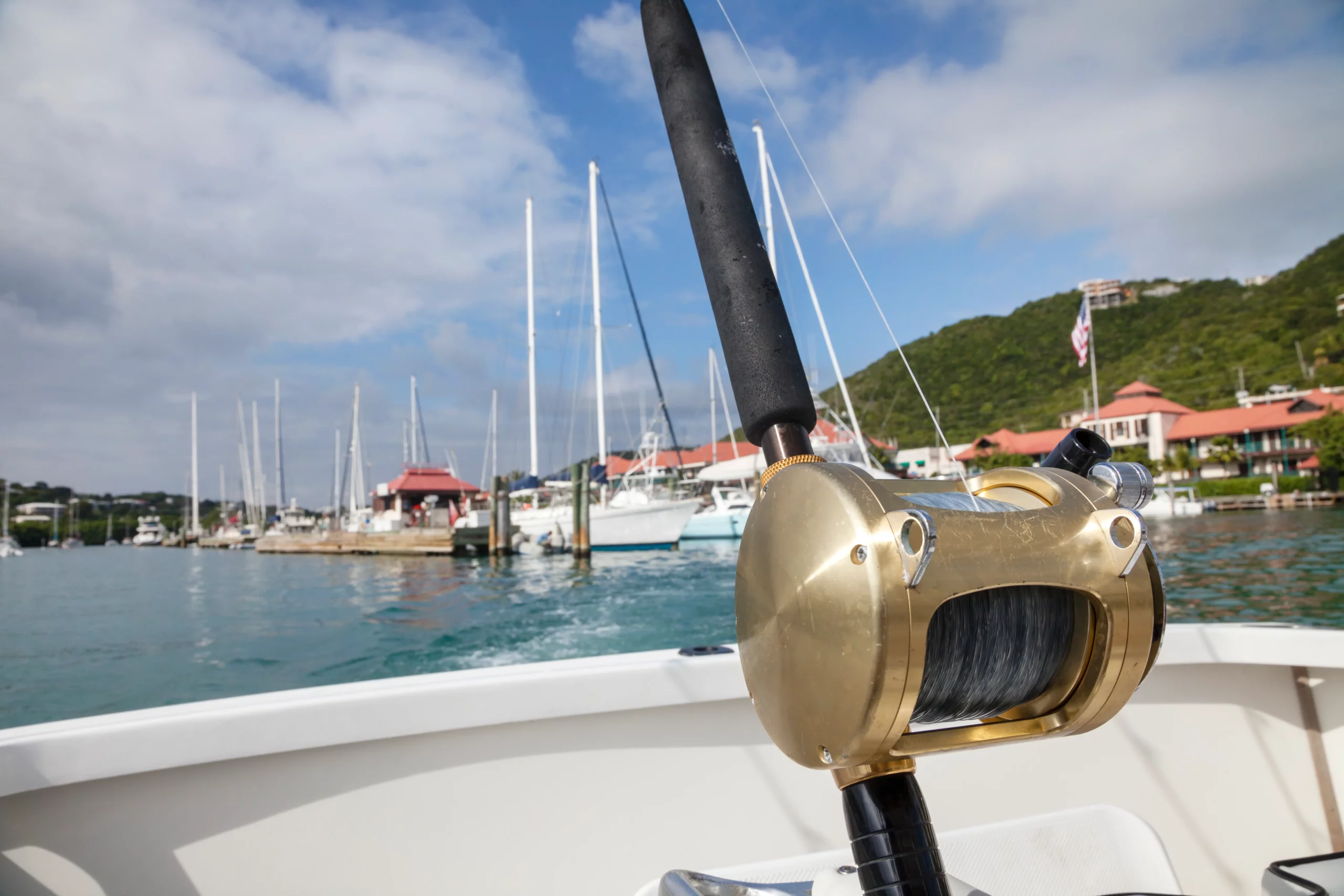Introduction
Brief Overview of Tuna Fishing
Tuna fishing, a beloved pursuit among anglers worldwide, offers not only a thrilling adventure but also a test of skill and patience. Renowned for their strength and speed, tuna species such as bluefin, yellowfin, and albacore present formidable challenges to even the most experienced fishermen.
Whether casting lines from the shores or venturing into the open sea, the pursuit of these majestic creatures has captivated the hearts of fishing enthusiasts for generations.
Importance of Selecting the Right Rod and Reel Combo
Central to the success of any tuna fishing expedition is the choice of equipment, particularly the rod and reel combo. Unlike many other forms of fishing, where a one-size-fits-all approach may suffice, tuna fishing demands specialized gear capable of withstanding the intense battles that often ensue. The right rod and reel combo can mean the difference between landing a prized catch and returning empty-handed, making it a critical investment for every angler.
Purpose of the Article
The purpose of this article is to serve as a comprehensive guide for anglers seeking to navigate the complexities of selecting the best tuna fishing rod and reel combo.
By providing insights into the key features to consider, reviewing top-performing combos in the market, and offering practical tips for maintenance and care, this guide aims to empower fishermen with the knowledge they need to make informed decisions and enhance their chances of success on the water.
Whether you’re a seasoned tuna fishing veteran or a novice eager to embark on your first adventure, this article will equip you with the tools and information necessary to optimize your fishing experience and reel in the catch of a lifetime.
Understanding Tuna Fishing
Types of Tuna Species
Tuna fishing encompasses a diverse range of species, each with its own characteristics and habitats. Among the most coveted species for anglers are the bluefin, yellowfin, and albacore tuna. Bluefin tuna, known for their immense size and strength, are prized for their rich flavor and are often pursued by dedicated fishermen in deep waters.
Yellowfin tuna, distinguished by their yellow dorsal fin and streamlined bodies, are renowned for their speed and agility, making them a favorite among sport fishermen. Albacore tuna, with their slender bodies and metallic blue backs, are highly migratory and can be found in both temperate and tropical waters around the world. Understanding the unique traits and behaviors of these tuna species is essential for effectively targeting them in various fishing environments.
Tuna Fishing Techniques
Tuna fishing employs a variety of techniques tailored to the preferences of individual anglers and the specific conditions of the fishing location. Among the most common techniques are trolling, casting, and chunking.
Trolling involves trailing baited lines behind a moving boat, mimicking the movement of prey to attract tuna. Casting, on the other hand, requires precision and skill, as anglers cast lures or bait into feeding areas and reel them in to entice strikes.
Chunking involves cutting bait into chunks and dispersing them in the water to create a feeding frenzy, attracting tuna to the area. Each technique offers its own set of challenges and rewards, and successful tuna fishermen often employ a combination of methods to maximize their chances of success.
Environmental Factors Affecting Tuna Fishing
Tuna fishing is deeply influenced by environmental factors such as water temperature, currents, and weather conditions. Tuna are highly migratory species, following temperature gradients and ocean currents in search of food and suitable spawning grounds. Understanding these patterns is crucial for locating tuna hotspots and predicting their movements.
Additionally, weather conditions such as wind speed, wave height, and atmospheric pressure can impact tuna behavior and feeding activity. Experienced anglers carefully monitor these environmental variables and adjust their fishing strategies accordingly to optimize their chances of success.
By staying attuned to the dynamic interplay between environmental factors and tuna behavior, fishermen can enhance their ability to locate and catch these elusive and prized game fish.
Key Features of an Ideal Tuna Fishing Rod and Reel Combo
Rod Specifications
- Length and Action: The length and action of the rod play a crucial role in tuna fishing. Longer rods provide greater casting distance and leverage during fights, while shorter rods offer more precision and control in tight spaces. The action of the rod refers to its flexibility or stiffness, with options ranging from fast action for quick hook sets to slower action for absorbing the shock of powerful tuna strikes.
- Material Composition: Tuna fishing rods are commonly constructed from materials such as graphite, fiberglass, or a combination of both. Graphite rods are lightweight and sensitive, making them ideal for detecting subtle bites, while fiberglass rods offer durability and strength to handle the intense pressure of battling large tuna.
- Power and Lifting Capacity: The power rating of a rod indicates its strength and ability to handle heavy loads. For tuna fishing, rods with medium-heavy to heavy power ratings are recommended to withstand the brute force of fighting large fish. Additionally, rods with sufficient lifting capacity are essential for efficiently bringing tuna to the surface, especially when targeting deep-dwelling species like bluefin tuna.
Reel Specifications
- Size and Capacity: Choosing the right reel size and line capacity is essential for matching the rod and reel to the target tuna species and fishing conditions. Larger reels with higher line capacities are suitable for offshore tuna fishing, where long casts and deep dives are common, while smaller reels are more appropriate for inshore or light tackle applications.
- Gear Ratio: The gear ratio of a reel determines the speed at which the line is retrieved. Higher gear ratios provide faster retrieval rates, making them ideal for quickly reeling in tuna during fast-paced battles. However, lower gear ratios offer more torque and cranking power, which can be advantageous when fighting larger, hard-fighting tuna species.
- Drag System: The drag system of a reel is critical for controlling the line tension and preventing break-offs during intense fights. Tuna fishing reels should feature a smooth and reliable drag system capable of exerting sufficient pressure to tire out powerful fish without risking line breakage. Adjustable drag settings allow anglers to fine-tune the pressure according to the size and strength of the targeted tuna.
Compatibility and Balance Between Rod and Reel
Ensuring compatibility and balance between the rod and reel is essential for optimal performance and comfort during long fishing sessions. The rod and reel should complement each other in terms of size, weight, and overall feel. A well-balanced combo not only enhances casting accuracy and efficiency but also reduces fatigue and strain on the angler’s arms and wrists.
Additionally, proper alignment between the rod guides and reel ensures smooth line flow and minimizes friction, maximizing casting distance and accuracy. By selecting a rod and reel combo that is well-matched and balanced, anglers can enjoy improved control, sensitivity, and overall fishing experience when targeting tuna.
Factors to Consider When Choosing the Best Combo for You
Budget Considerations
When selecting the ideal tuna fishing rod and reel combo, budget considerations play a significant role in narrowing down the options. High-quality rod and reel combos can vary widely in price, from budget-friendly options suitable for occasional anglers to premium setups designed for professional use. It’s essential to establish a realistic budget based on your fishing needs and preferences.
While investing in a top-of-the-line combo may offer advanced features and superior performance, there are also many reliable options available at more affordable price points. By carefully evaluating your budget and balancing it with your desired features and performance requirements, you can find a tuna fishing combo that offers the best value for your money.
Fishing Location and Conditions
The fishing location and conditions where you plan to target tuna should also influence your choice of rod and reel combo. Tuna fishing can take place in a variety of environments, including offshore waters, coastal areas, and even freshwater lakes and rivers. Each fishing location presents unique challenges and opportunities that can affect the selection of gear.
For example, offshore tuna fishing may require heavier-duty rods and reels capable of handling large fish and rough seas, while inshore or freshwater tuna fishing may favor lighter tackle and more maneuverable setups. Additionally, factors such as water depth, current strength, and weather conditions should be taken into account when choosing the appropriate combo for your fishing expedition.
Personal Preferences and Fishing Style
Personal preferences and fishing style play a crucial role in determining the best tuna fishing rod and reel combo for you. Consider factors such as rod length, action, and reel type that align with your fishing preferences and techniques. Anglers who prefer casting lures or baitcasting may opt for a shorter, more sensitive rod with a low-profile baitcasting reel, while those who prefer trolling or bottom fishing may prefer a longer, heavier rod paired with a conventional reel.
Additionally, factors such as handle grip, reel size, and overall ergonomics should be taken into account to ensure maximum comfort and efficiency during long fishing sessions. By selecting a rod and reel combo that suits your personal preferences and fishing style, you can optimize your performance and enjoyment on the water.

